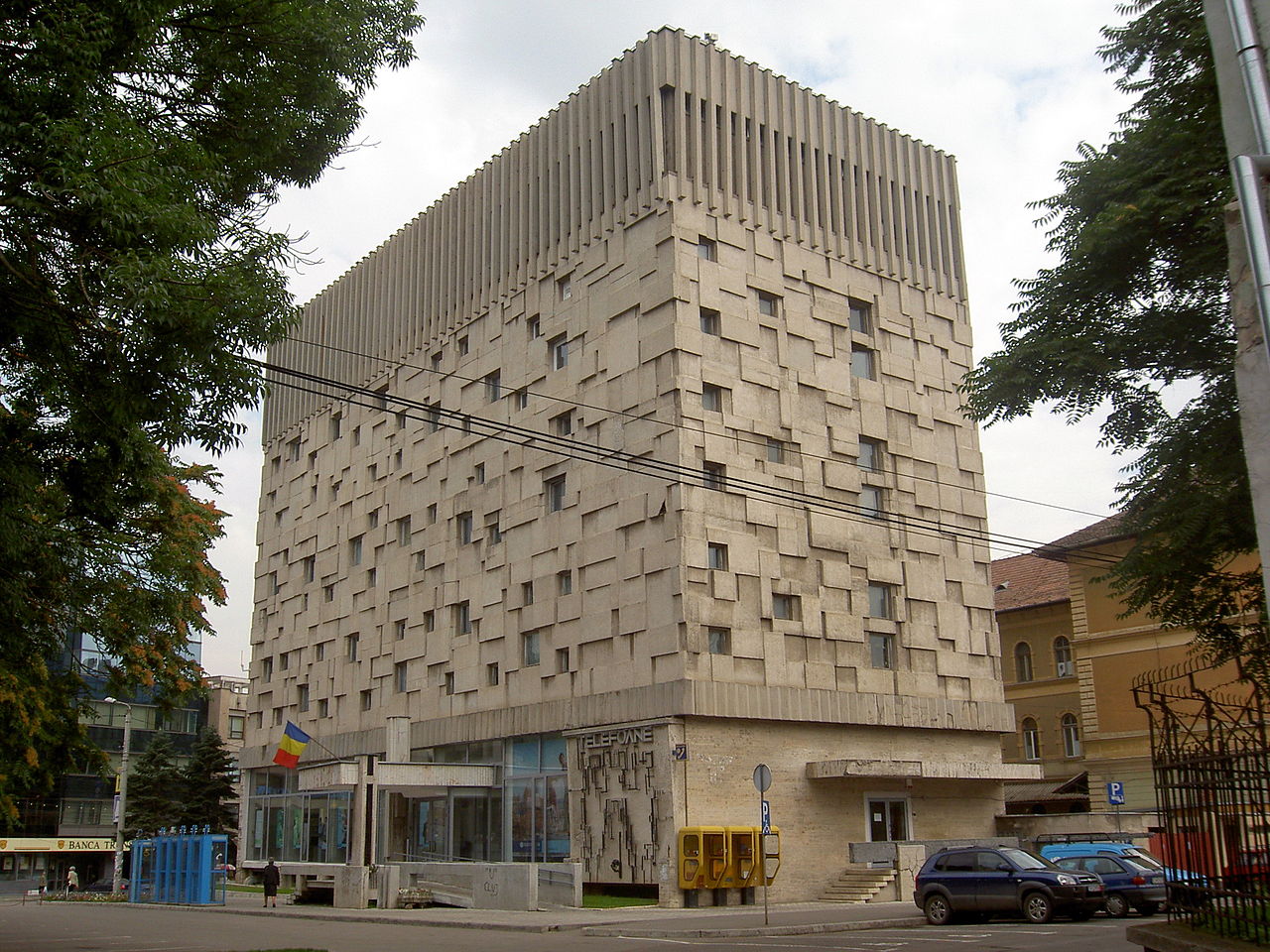#10222. Brutalist Relief Facade: Soviet Modernism with Contrasting Texture
This building represents a striking example of Soviet-era brutalism — an architectural style characterized by massive concrete forms and expressive texture. The facade is notable for its unique relief solution: the lower part is designed as a three-dimensional composition of protruding concrete blocks, creating a dynamic, almost sculptural effect. These elements are arranged in an irregular pattern, giving the building the character of a visual puzzle.
The upper part of the facade contrasts with the lower one — it is formed by vertical ribs creating a rhythmic pattern that softens the massiveness of the structure. This technique of dividing the facade into two different textural zones creates an interesting visual effect and emphasizes the functional division of spaces inside the building.
At the base of the building, there is a minimalist entrance with several telephone booths (indicated by the "TELEFONE" sign), suggesting the public purpose of the structure. A small flag (likely Romanian, judging by the colors) emphasizes the official status of the building.
Similar facade design techniques on a smaller scale can be interesting for modern residential construction: using protruding elements to create a play of light and shadow, contrasting combinations of different textures, as well as functional zoning through architectural means. Modern materials allow for the imitation of brutal concrete aesthetics without the need for massive structures.
